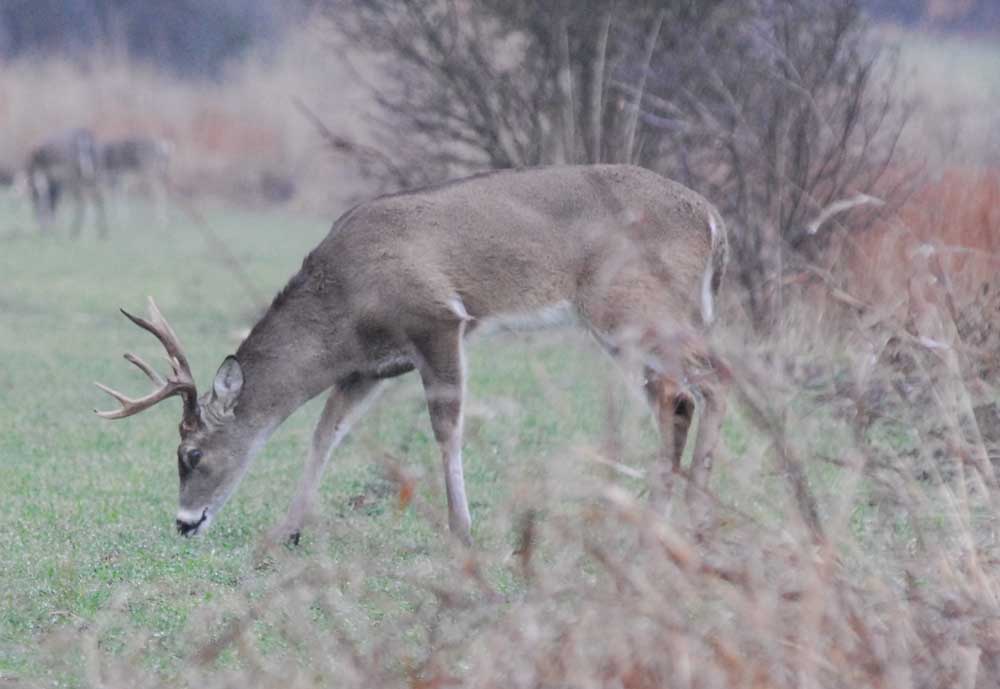Seasons Of Change: Hunting Seasons Have Been A Part of Texas Hunting Since 1861
Published 5:42 pm Thursday, August 31, 2023

- Texas has had hunting seasons since the 1800s. Deer season got its start because of concerns over market hunting.
Hunting seasons are a way of life and have been for what seems like forever.
There are different reasons for different seasons, but the most common thread is conservation. A season usually got its start because of concerns of exploitation of a population or maybe a concern over timing that could impact nesting success and population sustainability.
Trending
Fall hunting seasons in Texas have traditionally begun Sept. 1 with dove season and continue into May for spring turkeys.
Being a migratory bird, like ducks and geese, dove season is set by the Texas Parks and Wildlife Department within framework provided by the U.S. Fish and Wildlife Service under the Migratory Game Bird Act of 1918. Deer, quail, turkey and squirrels are homebodies and fall completely under authority of the state.
It is believed the first dove season in the state begin in 1916, not for the more common mourning doves, but for white-winged doves that at the time lived solely in the citrus groves and brush of the Rio Grande Valley.
No one remembers the limit for whitewings more than 100 years ago, but the special season has been around almost continuously since its beginning. Although it is hard to believe with a current statewide population estimated at almost 12 million that there were periods from 1954-56 and again in 1963 and 1985 when population numbers dipped so low following freezes the season was closed.
“The first official statewide regular dove season was in 1925, and I’m pretty sure that’s accurate. Early on there was only a North and South zone, and that north/south boundary moved around a lot from 1925 to 1941, with a third ‘Gulf Coast zone’ appearing in 1937 and possibly 1938, but only those years,” said Owen Fitzsimmons, TPWD dove program leader.
While the North zone has always opened in September, the South zone opener has ranged from Sept. 15 to mid-October, and even December in the 1930s.
Trending
The Central zone was created in 1983.
Fitzsimmons added dove hunting hours since the 1920s have mostly been from sunrise or one-half hour before sunrise to sunset. However, from 1951-1977 it was noon to sunset statewide.
Dove season was not the first regulated hunting in Texas.
In 1861 there was a ban on quail hunting on Galveston Island, which at the time was the most populated area in the state. Prior to that the birds were hunted year-round with no limit.
Early limits were set by the Texas Legislature, but managed through the Texas Fish Commission created in 1879. However, residents in about 130 counties deemed early rules too restrictive and broke away with home-rule in 1883 and remained that way for 100 years. The Fish Commission was dissolved in 1885, but came back in 1907 as the Texas Game Fish and Oyster Commission, according to Texas Quails by Dr. Leonard Brennan.
In 1903, because of concern about bird numbers, the legislature invoked a 25-bird daily limit, but hunting was still permitted 365 days a year. In 1905 it was reduced again to 15.
A hodge-podge of county regulations emerged in the early part of the 20th Century designed to protect quail, but with little scientific backing. The only consistent rule seemed to be no hunting near a church on Sundays.
It was not until 1959 that somewhat of a statewide regulation began with a season running from Dec. 1 through Jan. 16 and a 12-bird limit.
Concerns over market hunting led to a seven-month deer season in 1881. According to the Texas Parks and Wildlife Department, white-tailed deer numbers were depleted in Texas in the 1800s by commercial meat and hide hunters, along with a lack of knowledge of deer habitat. It was estimated that between 1844 and 1853 more about 75,000 deer hides were shipped from one location.
In 1903 a limit of six bucks per season was begun. It dropped to three in 1907.
Deer numbers had plummeted to less than 500,000 in the early 1900s, a number smaller than the harvest rate today. Deer numbers started to increase in the 1930s and 40s, thanks in part to a restocking program started in 1938 and eradication of screwworms in the early 1960s. Since those days season lengths, limits and regulations have been liberalized to help maintain a herd that now numbers close to 4 million annually.
Texas’ wild turkey population was also impacted by subsistence and market hunting in the early years of statehood leading to an eight-and-a-half-month season in 1881, and a 25-bird per year limit in 1903. Four years later the limit was dropped to three and beginning in 1919 hens were protected, according to department records.
Texas did not get a spring turkey season until 1969, and the first modern-day Eastern turkey season was opened in 1975.
The state’s waterfowl seasons go back to the beginning of the Migratory Game Bird Act of 1918, but efforts to limit the harvest along the coast preceded that.
According to author Robert Sawyer, waterfowl hunting on the Texas coast was popular going back to the 1800s. It attracted hunters who came by boat or train from around the U.S.
It also attracted market hunters who reportedly shipped as many as 60,000 birds in a year to market.
TPWD data shows that through the years goose hunting has remained much the same with some extensions of season dates and limits. Maybe the biggest oddity came in 1934 when the season was restricted to 30 days with hunting only on Friday, Saturday and Sunday.
There may not be any type of hunting that has gone through as many seasonal transitions as duck hunting. Season lengths have ranged from 108 days down to 25. Legal shooting hours have bounced back and forth from starting one-hour before sunrise to sunrise, and closing at sunset, a half hour before sunset, 4 p.m., and at times noon on opening days.
Limits have been as liberal as 25 and as conservative as two, which came in 1962 when the season was limited to 25 days.
Early season zones were divided by a rail lines running from Laredo to Texarkana, but were later shifted using highways as markers.
Texas still has a lot of different regulations, but it could be worse were it not for passage of the Texas Wildlife Conservation Act in 1983 finally giving TPWD control of limits and dates.






